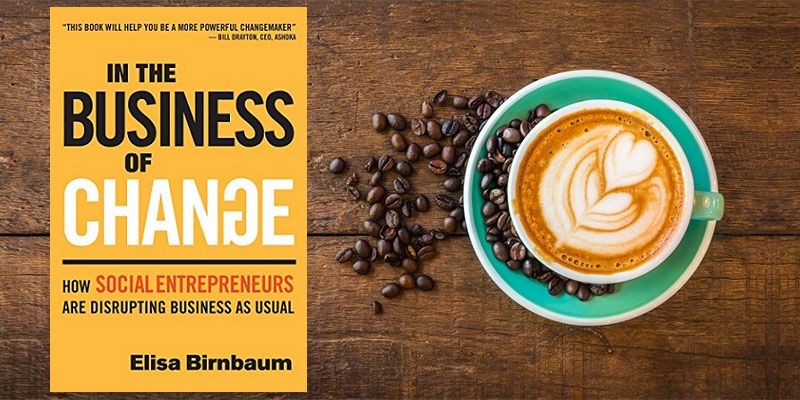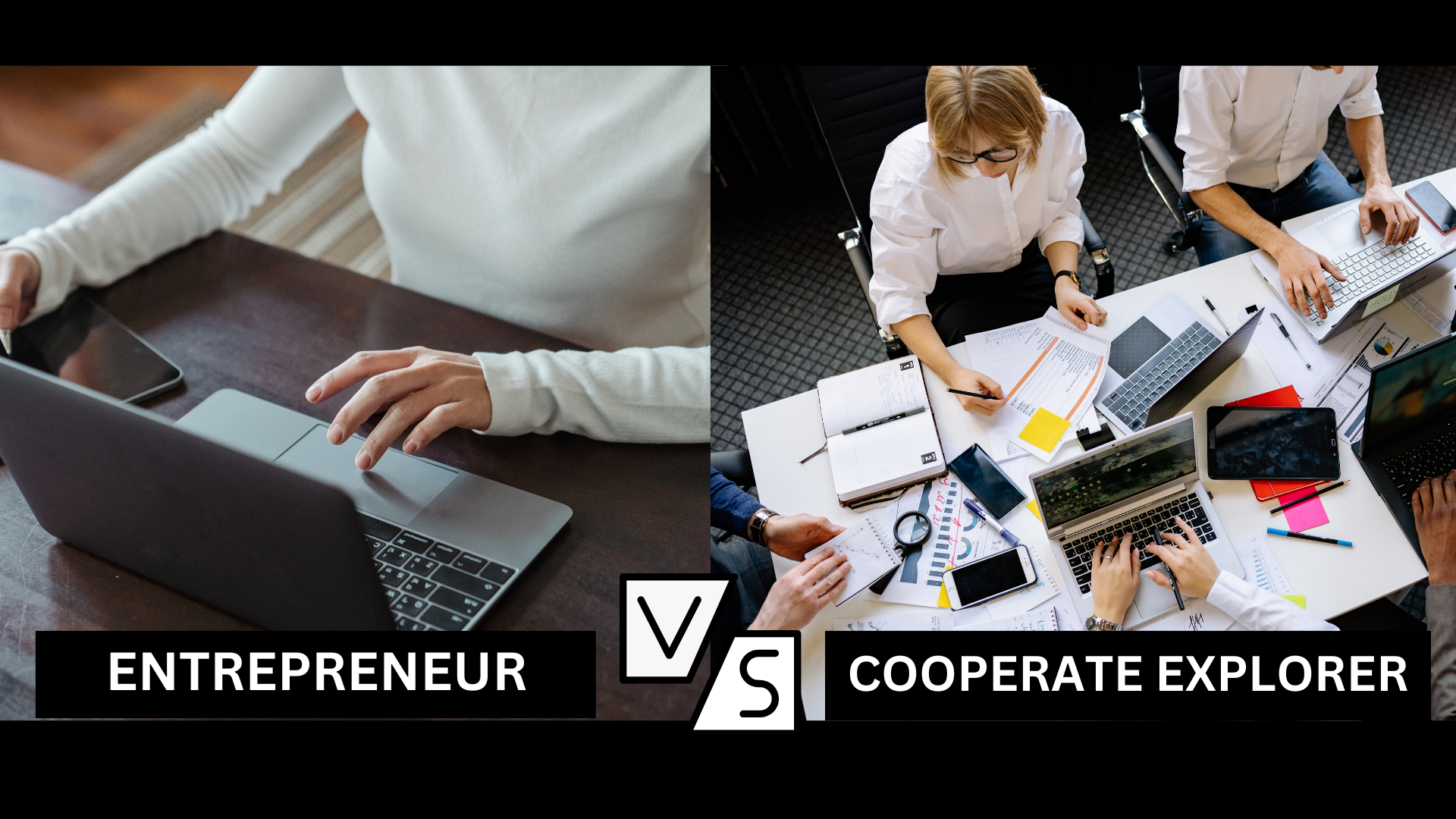Social entrepreneurship: the 10 success factors for impact
With a blend of purpose and profit, social entrepreneurs are bringing about broad transformation in a range of sectors and countries, as explained in this insightful book.
Launched in 2012, YourStory's Book Review section features over 250 titles on creativity, innovation, entrepreneurship, and digital transformation. See also our related columns The Turning Point, Techie Tuesdays, and Storybites.
A combination of inspiring examples and actionable insights on social innovation is offered in the book, In the Business of Change: How Social Entrepreneurs are Disrupting Business as Usual, by Elisa Birnbaum.
Building on individual stories, the must-read book clusters the key learnings from the founder journeys into ten thematic chapters. There is also a useful reference section with a guide to more resources.
Based in Toronto, Elisa Birnbaum is the publisher and editor-in-chief of SEE Change Magazine, which has been covering social entrepreneurship for over 10 years. Her 185-page book is an engaging blend of founder stories and impact analysis from 65 organisations.
Here are my takeaways from the 10 chapters of the book, summarised in Table 1 (below). See also my reviews of the related books Lean Impact, The Next Billion Users, Social Entrepreneurship in India, The Hybrid Domain, A World of Three Zeroes, Do Good, and Scaling Up.

(image credit: YourStory)
1. Combining business with a social cause
Traditional philanthropy models based on donations, charity, and aid have limits when it comes to tackling social causes, Elisa begins. Business-minded social enterprise has been on the rise in many contexts as a way to ensure sustainability.
“Pity is not part of the narrative,” she adds. Financial self-reliance, quality, competitiveness, and dignity are key objectives in social entrepreneurship.
Challenges in the social sector include the complex, intertwined nature of social, cultural, and political problems. Many organisations also work in silos rather than forming partnerships. There are challenges in balancing purpose and profit, mission, and revenue in scale stage.
Some social enterprises are structured as for-profit organisations, others as non-profit, and yet others as a hybrid or combination. Many of them build on a wealth of insights, case studies, and models from the startup and social innovation movements.
For example, Bright Endeavours employs poor mothers to make soy candles and also teaches financial literacy and soft skills. Urban Pastoral leverages hydroponics with local sourcing and employment to create livelihoods and healthy food.
Greystone Bakery started by providing employment to struggling communities and then expanded to housing and childcare. It formed partnerships with Whole Foods and Ben & Jerry’s.
Social enterprises based on ethical and environmentally responsible practices in supply chains are being promoted by Canopy (publishing, fashion), Bureo (recycled fishing nets), and Oliberte (fair trade practices for shoes made in Ethiopia).
Some social entrepreneurs are also tackling larger policy issues for systems change such as Mission Asset Fund (lending circles to improve credit history of poor people).
2. Innovation
One chapter describes a range of innovative models developed by social entrepreneurs. They include digital platforms, recycled products, new materials, and industry alliances.
For example, Bureo makes skateboards from recycled fishing nets, thus differentiating from other organisations recycling plastic bottles. It also partnered with industry leader Carver and Patagonia’s venture fund, Tin Shed Ventures.
Copia tackles the twin problems of food waste and hunger by providing an online marketplace connecting suppliers (restaurants, event organisers) with buyers (non-profits feeding the poor and hungry, eg. immigrants).
Laura D’Asaro hit upon the idea of snacks made from insects on a visit to Tanzania; the practice is common in many African and Asian countries. ‘Chirps Chips’ made from cricket flour were shown to be more environmentally sustainable and less “icky”.

MASS Design provides architecture solutions that promote “justice and human dignity”, such as better facilities for cholera treatment. Folia Water provides safe drinking water solutions through silver-infused filter papers.
3. Problem definition
The book charts the founder stories of a number of social enterprises, many of whom began only with a nugget of an idea; some founders even became “accidental entrepreneurs”. Many were driven by a direct personal connection to a social problem.
They were frustrated, angered or saddened by the problems and eventually excited when they devised solutions. Some even saw economic opportunity in a crisis, which lit their entrepreneurial fires. “Necessity is truly the mother of invention,” Elisa affirms.
For example, The Last Mile tackled the challenges of incarceration and recidivism by offering computer coding classes and jobs. The venture grew as an “unplanned serendipitous involvement” with the issue of keeping former prisoners from getting into jail again. Like a startup, the social enterprise grew in an incremental manner.
Marilyn Garson co-founded GGateway (Gaza Gateway) to tackle unemployment of graduates in the Gaza Strip. It provides IT outsourcing contracts for students and partnered with UN Women and UNRWA (UN Relief and Works Agency for Palestine Refugees).
Dismay at the BP oil spill near New Orleans set off designer Tippy Tippens on a journey in eco-entrepreneurship. She launched products like BirdProject soap and eventually founded Goods That Matter, focussed on eco-friendly products.
Canada’s codfishing moratorium devastated the economy of Fogo Island, spurring Zita Cobb to revitalise the community. She launched the Shorefast Foundation to make the region relevant, vibrant, and sustainable through eco-tourism and art residency programs.
Moved by the issues her own mother was facing, Laurin Hodge founded Mission: Launch to help women who were former prisoners. It provides training, legal help, housing support, and job referrals.
Thorkil Sonne launched Specialisterne to provide training and jobs in software testing for those with autism – his own son was autistic. He also formed a partnership with SAP in this regard.
John Rush founded ‘She Has a Name Cleaning’ to provide struggling and marginalised women with the dignity of a professional service, clean uniforms, and quality offerings. Spiraling effects were new skills and character building.
4. Partnerships
Aligned partnerships provide valuable opportunities for growth, mentorship, and quality improvement. Ethical sourcing and ethical clothing are areas where social enterprises are tapping into growing consumer awareness and forming partnerships with large players.
Canopy began its eco-product journey by promoting paper made from straw rather than ancient forests, and convinced publishers like Random House and Canadian Geographic to “green” their practices. Zara, H&M and Patagonia signed on to its pledges to use more recycled fibre in clothing.
Back to the Roots, founded by Nikhil Arora and Alejandro Velez at Berkeley College, promotes DIY urban farming kits for healthier and sustainable food practices. It partnered with Whole Foods, Costco and Home Depot for distribution.
ArtLifting sells artworks made by those who have disabilities or are homeless, and has partnered with Starbucks, ThinOptics, and mattress company Leesa. Citizen Schools supports low-income communities, and has partnerships with Google, Cisco, and Fidelity for their employees’ volunteer and CSR initiatives.
5. Community engagement
“Parachuting” cookie-cutter solutions from outside a community or giving grants only for paying foreign experts are some practices that have led to failed social initiatives, Elisa cautions. It is important to work in and with the community at all stages of the venture, and understand local cultural dynamics.
Information sharing, feedback, and community involvement will help sustenance and empowerment of the initiative through local links. This improves outcome as well as local capacity, otherwise the problem won’t be tackled properly and even new problems may be created.
Skilled facilitation is needed to align perspectives and commitment. The ‘4 Es’ of success for community engagement are environment, emotion, education, and economy. Community buy-in is needed even “before the shovel hits the ground,” Elisa evocatively describes.
VisionSpring seeks community feedback on designs and aspirations while making and selling affordable eyeglasses. It works with vision access programmes in India and NGOs like BRAC in Bangladesh.
Shorefast Foundation works with local communities of Fogo Island for initiatives like unique hotels, quilting, and furniture. Ocean Academy involves its school students as ‘Bike with Purpose’ guides for sustainable tourism. Sustainable Organic Integrated Livelihoods (SOIL) builds better sanitation facilities by local sourcing, training, design and maintenance.
6. Scale
Balancing profit with purpose at scale stage requires extra diligence and care for social entrepreneurs, Elisa cautions. Quality, human touch, philosophy, branding, and operations need to be carefully preserved as well. At the same time, it can be difficult to turn down funding during a financial crunch.
Some use the franchise model (Mission Asset Fund), others leverage technology like online learning (TechChange) or permission marketing through social media (Social Nature).
Others have expanded their product lines. Focusing on “reimagining and recycling” waste material, Elivs & Kresse began by converting disposed firehoses into belts, and then expanded into bags, rugs, and cases.
7. Financial sustainability
Crowdsourcing, impact investors, government grants, donor agencies, progressive foundations, and awards competitions are avenues for financial sustainability for social enterprises, in addition to revenues from products and services.
Impact investing calls for not just “enlightened capital” but “patient capital”, since social enterprises need to “crawl, walk, and then run” and can’t just magically leap to scale, Elisa cautions.
An emerging trend in the field is ‘pay for success,’ which also appears in the form of Social Impact Bonds (SIB). This brings in government funding when performance targets are successfully met by social entrepreneurs.
Kickstarter has helped launch many social ventures such as Chirp Chips. Isadore Recycling (electronic waste) raised some funding from the Roberts Enterprise Development Fund (REDF).
However, Inspiration Kitchens (providing jobs for the poor) faced “conditional funding” challenges when a donor required it to open a new kitchen in an isolated area. That made it hard to attract customers and become sustainable.
8. Storytelling
Stories are powerful, particularly for social innovators. “They carry tremendous influence as tools of engagement, influence, and incentivisation,” Elisa rightly points out.
Stories help differentiate and rise above the clutter, and are effective internally as well as externally. However, founders should not bank solely on stories without adequate quality and competitiveness in their offerings, she cautions.
FiberShed promotes locally-sourced clothing to reduce ecological footprints. It publishes stories and photos of its designers, ranchers and artisans on its blog.
Sea to Table promotes ethical practices through sustainable and traceable fishing. It personalises its narrative of fresh fish through stories of its fisher communities.
City Girl Coffee promotes women-owned or managed coffee farms around the world. It uses storytelling to convince its customers that they are contributing to a bigger cause and not just buying premium coffee.
Sweet Beginnings sells natural honey, and expanded into honey-infused skincare products in the luxury space. It even had an apiary at Chicago’s O’Hare airport, drawing on the story power of beekeeping.
9. Metrics
Social activity and impact measures are important for entrepreneurs as well as investors and partners. Quantitatively and qualitatively, founders and stakeholders need to conduct research to know if they are on the right track, Elisa emphasises. Baseline and benchmark studies are important in this regard.
External evaluation, validation, and affirmation can be objective and credible, but also expensive for cash-strapped entrepreneurs. Opinions and measures of what constitutes success and progress can also vary, eg. number of recycled products, consumer attitudes towards recycling.
Rebuilding Exchange shows how furniture, bags, and ropes can be made from reclaimed materials, and also conducts workshops. It has a wide range of impact measures, including the amount of material diverted from landfills.
CleanSlate provides skills training and jobs for former prisoners. Job procurement is a metric, but so is job retention. Community revitalisation is another outcome.
Juma Ventures provides transitional jobs to at-risk and low-income youth. Better school graduation rates and overcoming stigmas are its other accomplishments as well.
Research firm Abt Associates conducted a five-year study, which found that Citizen Schools favourably impacted self-esteem and pro-social behaviours. There is more to education than test scores.
10. Support systems
Elisa documents a wide range of support systems for social entrepreneurs: incubators, accelerators, networks, workshops, mentorship programmes, fellowships, pitch competitions, and educational degrees.
Chirp Chips benefited from Kickstarter and took part in MassChallenge, the Echoing Green fellowship programme, and Plug and Play incubator. Rising Tide Car Wash benefited from the Uncharted accelerator programme, with insights on rapid prototyping.
Goods That Matter received useful advice on pricing points from the Propeller social incubator. Healthcare enterprise Upstream benefited from the Ashoka fellows network, which helped with validation during fundraising.
The book ends with a resources section listing events, networks, and academic programmes (though the book references could have been considerably expanded). For example, relevant competitions are the Hult Prize, Purpose Prize, and Global Social Ventures Competition.
In sum, social enterprises play an important role in shifting the economy from extractive to regenerative mode, and tackling challenges of sustainability, inclusion and justice. Enlightened businesses can truly be a “force for good,” as social entrepreneurs dig deeper into the dynamics of change.
“The story of social entrepreneurship is one of inspired vision, determination, ingenuity, and survival,” Elisa signs off.
Edited by Megha Reddy












